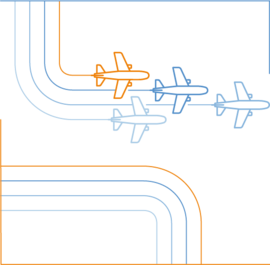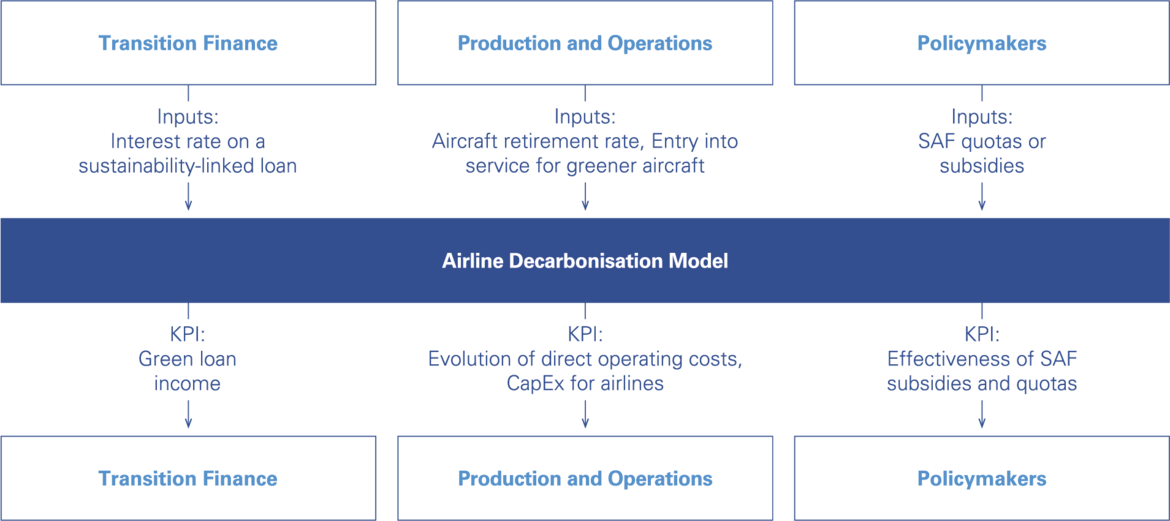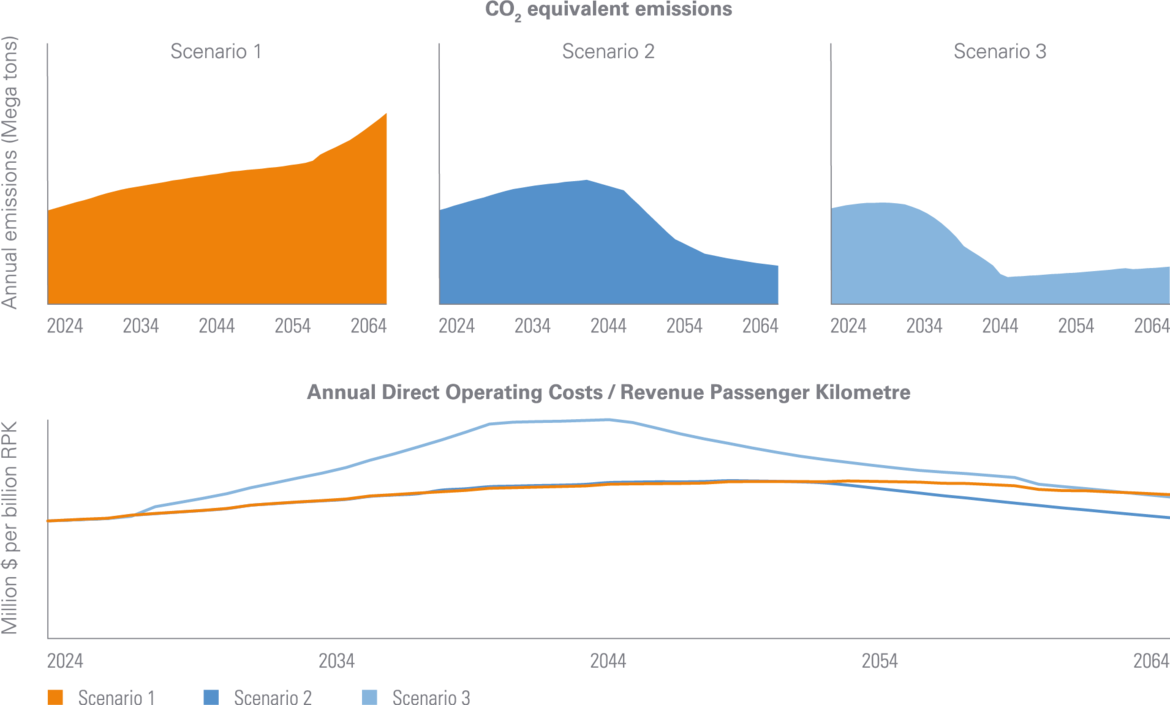In the strategic research area of transition to climate neutrality, we focus on the systemic changes required for air travel to become climate-neutral. A transition signifies not just mere technological change, but the disruption of a network of technology, infrastructure, regulation, financing norms and consumer behaviour.
Bauhaus Luftfahrt’s scenario tool, the “Airline Decarbonisation Model”, was built with this perspective. We recognised that aviation’s transition is going to be very complex – there are multiple levers we can pull, which conveys that there are several possible paths to climate neutrality. By making it possible to explore this landscape of paths through the projection of what-if scenarios, we aim to reduce the uncertainties that currently plague the progress of aviation’s greening.

The model incorporates the role, or perspective, of all aviation stakeholders; the permutations to design your scenarios are numerous. On the policy side, for instance, a user has the opportunity to impose Sustainable Aviation Fuel (SAF) quotas (such as ReFuelEU), or SAF subsidies, and see how it affects air travel’s transition. These options can be combined with the introduction of greener kerosene aircraft offering particular efficiency gains, or even with radical aircraft concepts that are powered with liquid hydrogen.
Comparing scenarios on key performance metrics such as annual and cumulative emissions, emissions per Revenue Passenger Kilometre (RPK), evolution of various operating cost components and capital expenditures gives us greater clarity on the relative effectiveness (i. e. how fast is the decarbonisation) and efficiency (i. e. how costly is the decarbonisation) of a certain scenario.


